I have two tables as follows:
Contract
 |
|
Contractuser

My job was to fetch latest invoice date for each contract number from Contractuser table and display results. The resultant table was as follows:
Result Table

Now I wanted to get a auto-increment column to display as the first column in my result set.
I used the following query for it:
SELECT @i:=@i+1 AS Sno,a.ContractNo,a.SoftwareName,a.CompanyName,b.InvoiceNo,b.InvoiceDate,
b.InvAmount,b.InvoicePF,max(b.InvoicePT) AS InvoicePeriodTo,b.InvoiceRD,b.ISD
FROM contract as a,contractuser as b,(SELECT @i:=0) AS i
WHERE a.ContractNo=b.ContractNo
GROUP BY b.ContractNo
ORDER BY a.SoftwareName ASC;
But it seems that the auto-increment is getting performed before the group by procedure because of which serial numbers are getting displayed in a non contiguous manner.